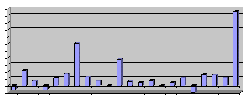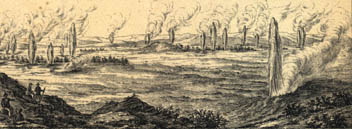Greater Yellowstone Ecosystem
The objective of the Greater Yellowstone Ecosystem Initiative is to provide integrated natural resource science information for use by land-resource managers and policy makers. Information will be provided through three activities: (1) development of consistent geographic data bases, (2) research into the factors that control habitat use by humans and by wildlife, and (3) decision support capabilities and services. The unique role and objective of USGS is to provide information that is consistent across boundaries of management units. An Initiative office in Bozeman, Montana, will maintain and serve the data, perform analyses, and respond to queries by managers and other users of the data. The Bozeman office will also coordinate efforts with the National Parks, National Forests, and other management units in Greater Yellowstone, and will provide data in cooperation with the Greater Yellowstone Area Data Clearinghouse at Montana State University.
Analyzing Landscape Change in the Greater Yellowstone Area
Contrary to popular portrayal, the western U.S. has historically held a largely urban population. However, recent trends in the West suggest rapid increases in rural development1. Consequently, increases in population (Figure 1) and changes in patterns of land use are potentially causing significant changes in the landscape of the Greater Yellowstone Area (GYA). This study is examining land-use and land-cover change in the GYA using Landsat Thematic Mapper (TM) and Multispectral Scanner (MSS) satellite images from 1972 to 2000, digital orthophoto quadrangles, and socio-economic data.

Click on the image to see a larger version.
Yellowstone National Park has drawn worldwide attention for over 100 years, largely due to its spectacular landscape and wildlife. However, the Yellowstone landscape extends far outside the park boundary and includes humans as part of the ecosystem. As the human influence over land-cover patterns evolves and intensifies, the potential for impacts increases. Historical studies of land-use and land-cover change are one way to explore the effects of human activities on our environment and can be used to predict future landscapes.

Click on the image to see a larger version.
image from Die amerikanische Staats-Domäne (National Park) im Quellgebiete
des Yellowstone Flusses mit den Geyser-Gebieten, 1871.
Research Questions
What is the extent and pattern of rural landscape change in the GYA?
What are some of the major driving forces of change in the GYA?
How have human-induced changes in land cover affected wildlife habitat?
1William Riebsame, general editor; James J. Robb, director of cartography ... [et al.]. 1997. Atlas of the new West : portrait of a changing region. New York : W.W. Norton & Company.
The Greater Yellowstone Study Area
Satellite Image of the Teton County, Wyoming Area
Land Cover Derived from Landsat Data
Project Lead: Ray Watts
U.S. Department of the Interior
U.S. Geological Survey
Rocky Mountain Mapping Center
URL: http://rockyweb.cr.usgs.gov/html/gye/
Maintainer: rtpelltier@usgs.gov
Last modified: 24 Jan 2000
